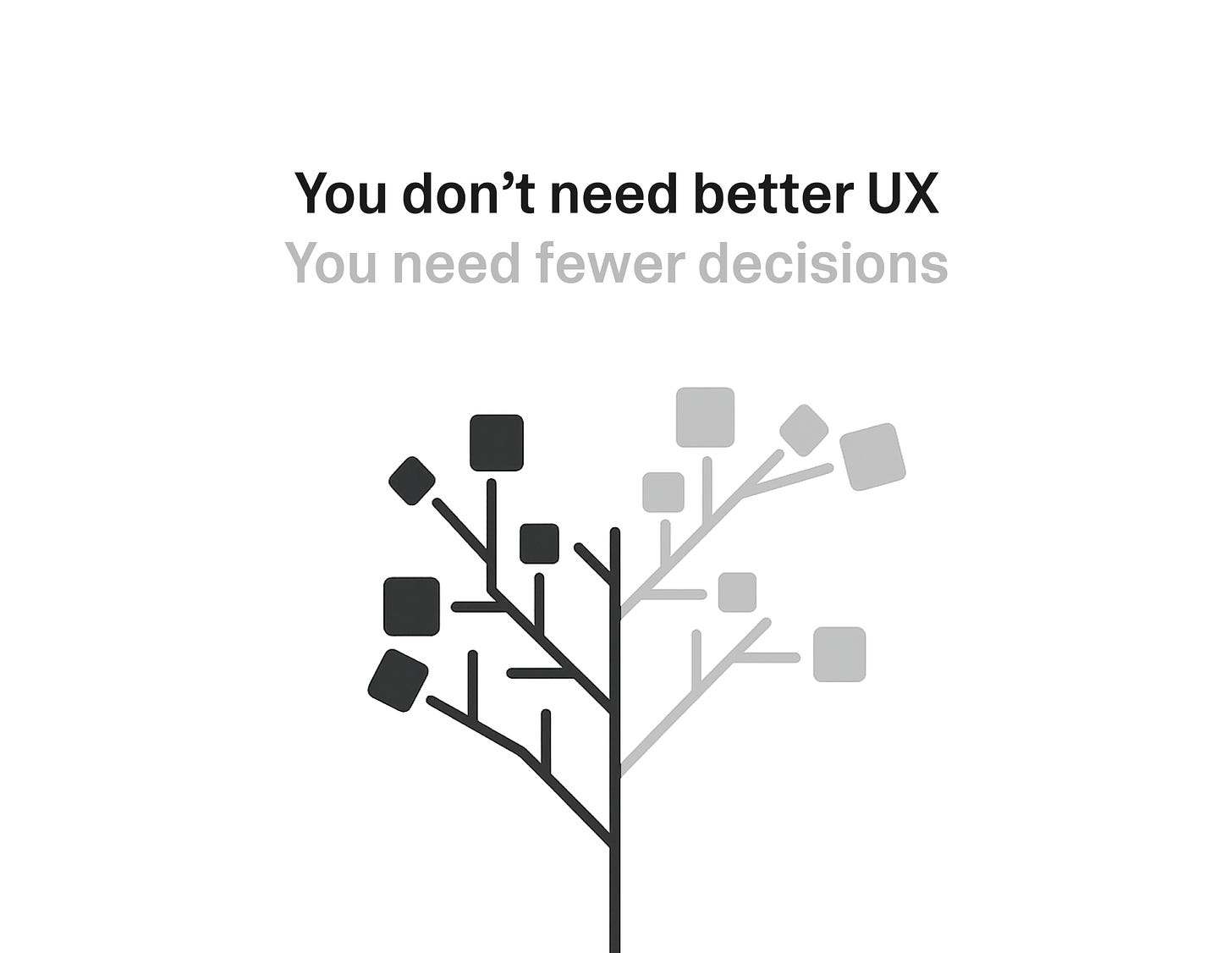Founders love to say their product needs better UX.
So they bring in designers to polish onboarding, clean up the UI, or add clever microcopy.
But the core problem remains the same: using the product still feels like work.
If you look at most products today, they feel like decision trees, especially SaaS tools.
They're packed with small choices:
Which plan s…




